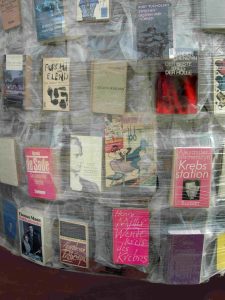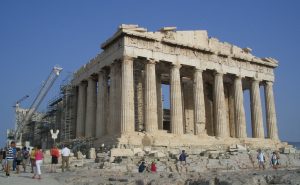You do not want to have prejudices nor do you want to be „judgemental“. But how can you find your way in the art world without JUDGEMENT?
There is a need for clarification of concepts. It would be prejudiced to say that every judgement is a bad thing. Also wrong would be considering any outspoken judgement as the person thereby being „judgemental“. Those misunderstandings (if that is what they are) are quite common, however, and anyone having expressed his or her frank judgement will have encountered them.
To like or not to like – that is not the question
Anybody can like or dislike anything. You don’t always have to, of course, but all over the place, we are asked to indicate our likes and dislikes – say by some stars or by directing your thumb. I guess this is ok if you are to choose which ice cream bar to visit.
Judgement, on the other hand, is a matter of training your capacity to judge. Let’s have a look at an example. In Kassel 2017 the most conspicuous work shown was “The Parthenon”.

The size certainly is impressive. But what about the contents? The surface of the Kassel Parthenon is covered with books. Also, the title, referring to the Parthenon temple on Acropolis, which the artwork architecturally roughly copies, suggests that this is made in praise of knowledge. The ancient temple was dedicated to Athena, goddess of knowledge.
Personally, I am a bit sceptical of big contemporary artworks, since I often find there is not much more to it than just that. But let us take a closer look at The Kassel Parthenon.
Already sceptical, I quickly noticed that each book is not unique – there were several copies of each title. This I found a bit cheap – have they made some publishers „dump“ their left-over copies of outdated books?

Perhaps they have, but on the other hand, the books seemed not picked at random. On the contrary, I found many a book/author I knew of, and sometimes had read, mostly classics, some older, like Schiller and Goethe, and some newer like Thomas Mann and Alexander Solzhenitsyn.
All worth praising, I guess. But then again, is that all? Will the Parthenon as an artwork enhance your appreciation of literature? Would (did) you sit in front of the Kassel Parthenon and contemplate the European literary heritage?
Later reading taught me that the books displayed had all once been forbidden, and indeed some of them still were – somewhere. This information increased my respect for the artwork a bit. But what effect the artwork has, and can have, on myself and others, remains a question. Does the average spectator simply tick off “literature and freedom of speech supported” and then go home?
Artwork and context
The questions ending the above paragraph I believe cannot be answered by scrutinizing the Kassel Parthenon alone. How an artwork works is a matter of context. Should I ask what you think, then? Judgement is perhaps best done in a social context? But someone has to start, and even more important: someone has to follow.
Besides, I confess that I started to LIKE the artwork when I prepared the images presented above. But I now believe that this was merely a self-indulging feeling related to the fact that I was able to make the photos more beautiful (e.g., by adding a decorative blue sky) and related to some hang-ups that I projected into the image (which I shall not spell out).
Artwork of the fortnight

Feeling good is not immediately judgement – but developing sound judgement can help you feel good on a deeper level. Honouring the ancient Greeks who were able to build communities in which judgement could develop, I bring their tribute to Athena, goddess of knowledge. The Athenians‘ contributions to understanding truth, beauty, and what is good are still with us today.
On the other hand, the Athenians killed Socrates, and his successor Aristotle had to flee to prevent them from doing the „mistake“ again. Civilisation was never easy – but it is the only thing worth trying.
Schreibe einen Kommentar